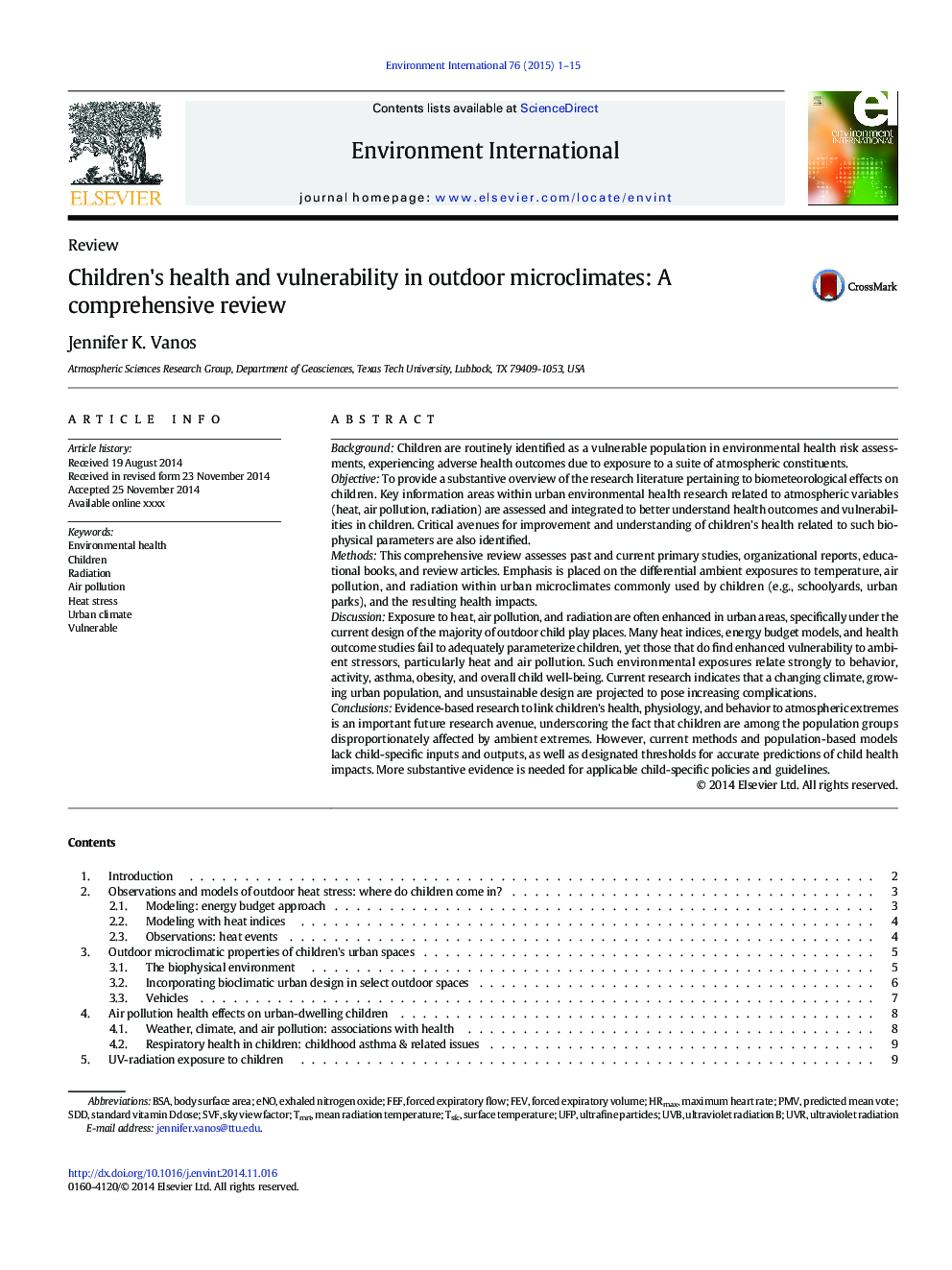| Article ID | Journal | Published Year | Pages | File Type |
|---|---|---|---|---|
| 6313741 | Environment International | 2015 | 15 Pages |
Abstract
Evidence-based research to link children's health, physiology, and behavior to atmospheric extremes is an important future research avenue, underscoring the fact that children are among the population groups disproportionately affected by ambient extremes. However, current methods and population-based models lack child-specific inputs and outputs, as well as designated thresholds for accurate predictions of child health impacts. More substantive evidence is needed for applicable child-specific policies and guidelines.
Keywords
FEFTmrtultraviolet radiation BSVFUVRHRmaxUFPPMveNOSDDUVBBSAUrban climateVulnerableAir pollutionHeat stressUltraviolet radiationEnvironmental healthforced expiratory flowForced expiratory volumeMaximum heart rateSurface temperatureUltrafine particlesPredicted mean votebody surface areaFevSky view factorRadiationChildren
Related Topics
Life Sciences
Environmental Science
Environmental Chemistry
Authors
Jennifer K. Vanos,
